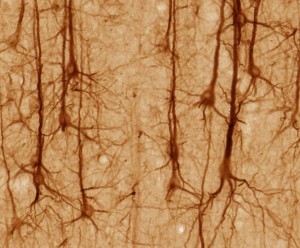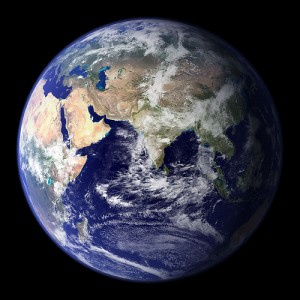The beat of the solar system
Whimsical. Charming. The "beat" of the solar system. Two times around per tone for speedy Mercury.
Whimsical. Charming. The "beat" of the solar system. Two times around per tone for speedy Mercury.
You owe it to yourself to view these ten spectacular images, all but one of them taken by the Hubble telescope. This series of images was featured in Discover Magazine. I find myself imagining what Galileo himself would have said if he had been able to see these images. Or how Edwin Hubble (1889 – 1953) would have reacted. These are truly billion dollar pictures. Below, the Spindle Galaxy:

Here you'll see and hear a beautiful Hawaiian evening sky to go with beautiful music. Such a spectacular way end a long day! Strongly consider watching this short video in HD: The vivid fluidity of the star-filled sky in this video is something I'd never before viewed. There is an ocean of stars up there, including the vast edge of the Milky Way galaxy itself. Watching the "movement" of those stars allowed me to feel, like never before, that our own orb is moving through space. I've long known, intellectually, that the Earth is spinning and rotating through space, but this time-lapse video really brings that point home. We are moving too, in a dramatic way, every second of every day. We aren't the stable platform from which one can objectively view the rest of existence. This video seemingly pushed me to an Archimedean point. Bravo!
I’m finding myself to be disoriented tonight. You see, it has occurred to me (as it sometimes does) that I’m actually an incredibly complex community of trillions of individual cells, no single one of which is capable of having any conscious thought, though I am easily able to think consciously as a complex adaptive system of cells.
I'm also disoriented because it occurs to me tonight that this community of that is “me” is kept alive and conscious by an internal pulsing ocean of blood, its composition very much like the Earth’s oceans, which were apparently our ancestral home. Equally amazing, this internal ocean of blood is pumped through 60,000 mile of blood vessels by a heart that beats 100,000 each day, thanks to our incredibly reliable pacemaker cells. How can any of this possibly be true, except that it is true, because I am writing this post and you are reading it?
It also occurs to me that there are far too many other parts of my human body that I almost always take for granted, such as my liver, which continuously performs hundreds of chemical processes without any conscious help from “me" (not that I could possibly be of assistance). Even more amazing, the liver can repair itself. How is any of this remotely possible?
There are many other things on my mind tonight, all of which disorient me, because I'm trying to clear out my preconceptions and see these things as though I were seeing them for the first time. For instance, I seem to have evolved from viruses, which is mind-blowing. Actually, half of all human DNA originally came from viruses which embedded themselves into my ancestor’s gametes.
 But I'm not done describing my disorientation. I am also disoriented tonight because I've reminded myself that some of my ancestors were sponges. No, they didn’t just look like sponges; they were sponges. And once cells figured out how to thrive together in that primitive sponge-like way, things rapidly got far more interesting. This real-world story of human gills, paws and fur is more amazing than any fiction anyone could ever write.
Tonight, I am also thinking about several people I know who are fighting for their lives against illness. I sometimes hear their friends and family asking how it could happen that the patients got so sick. But I’ve got a different take on human frailty, sickness and death. I wonder how something so complex as the human body works at all. Ever. Truly, how is it that I can even wiggle one of my fingers?
But there’s yet more to my disorientation tonight. It also occurs to me that the community of cells that constitutes me is living on a huge rotating orb that revolves around a star so big that it makes the earth look like a speck.
But there's more. It seems that the universe in which we find ourselves is expanding, but from what? How did it get here? I don't trust any answers that I've ever heard. I'm assuming that some type of universe or multi-verse has always been here in one form or another, and that's admittedly my bald speculative assumption. I don't even know enough to have a belief on the topic.
It also disorients me that no one really knows why things exist in this way rather than in some other way or no way at all, although many people peddle simplistic answers--mere strings of words--in response to these basic questions.
The biggest reason I’m disoriented tonight is that it appears that we don’t even know how to ask the biggest questions--we betray our naive ways even by the way we describe such questions as "big." Our “whys” and "hows" are pale and shallow—we appear to be condemned to forever dabble with our conceptual metaphors in our attempts to understand our complicated existence. We seem to be trapped in our finite understanding, unable to ever get around our own corner. That's the way it seems to be to me tonight, and every time these sorts of thought come to mind.
I'm disoriented, but don't get me wrong. I'm not complaining. I am truly enjoying the ride. I never cease to be amazed.
But I'm not done describing my disorientation. I am also disoriented tonight because I've reminded myself that some of my ancestors were sponges. No, they didn’t just look like sponges; they were sponges. And once cells figured out how to thrive together in that primitive sponge-like way, things rapidly got far more interesting. This real-world story of human gills, paws and fur is more amazing than any fiction anyone could ever write.
Tonight, I am also thinking about several people I know who are fighting for their lives against illness. I sometimes hear their friends and family asking how it could happen that the patients got so sick. But I’ve got a different take on human frailty, sickness and death. I wonder how something so complex as the human body works at all. Ever. Truly, how is it that I can even wiggle one of my fingers?
But there’s yet more to my disorientation tonight. It also occurs to me that the community of cells that constitutes me is living on a huge rotating orb that revolves around a star so big that it makes the earth look like a speck.
But there's more. It seems that the universe in which we find ourselves is expanding, but from what? How did it get here? I don't trust any answers that I've ever heard. I'm assuming that some type of universe or multi-verse has always been here in one form or another, and that's admittedly my bald speculative assumption. I don't even know enough to have a belief on the topic.
It also disorients me that no one really knows why things exist in this way rather than in some other way or no way at all, although many people peddle simplistic answers--mere strings of words--in response to these basic questions.
The biggest reason I’m disoriented tonight is that it appears that we don’t even know how to ask the biggest questions--we betray our naive ways even by the way we describe such questions as "big." Our “whys” and "hows" are pale and shallow—we appear to be condemned to forever dabble with our conceptual metaphors in our attempts to understand our complicated existence. We seem to be trapped in our finite understanding, unable to ever get around our own corner. That's the way it seems to be to me tonight, and every time these sorts of thought come to mind.
I'm disoriented, but don't get me wrong. I'm not complaining. I am truly enjoying the ride. I never cease to be amazed.
Click on this link to see a beautiful photo of the Earth by the Goddard Space Flight Center. What is stunning to me is the thin-ness of the Earth's precious atmosphere. Click on the image for a much-enlarged version.
 How was this photo taken?
How was this photo taken?
This spectacular “blue marble” image is the most detailed true-color image of the entire Earth to date. Using a collection of satellite-based observations, scientists and visualizers stitched together months of observations of the land surface, oceans, sea ice, and clouds into a seamless, true-color mosaic of every square kilometer (.386 square mile) of our planet. These images are freely available to educators, scientists, museums, and the public. This record includes preview images and links to full resolution versions up to 21,600 pixels across. Much of the information contained in this image came from a single remote-sensing device-NASA’s Moderate Resolution Imaging Spectroradiometer, or MODIS. Flying over 700 km above the Earth onboard the Terra satellite, MODIS provides an integrated tool for observing a variety of terrestrial, oceanic, and atmospheric features of the Earth. The land and coastal ocean portions of these images are based on surface observations collected from June through September 2001 and combined, or composited, every eight days to compensate for clouds that might block the sensor’s view of the surface on any single day. Two different types of ocean data were used in these images: shallow water true color data, and global ocean color (or chlorophyll) data.